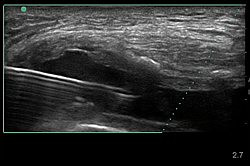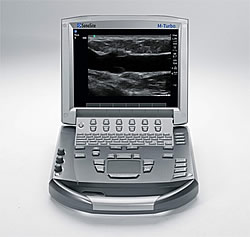New Medical & Surgical Developments
Robotically Assisted Knee Surgery
Partial knee replacements can now be done with extreme precision using a robotic bone cutting tool that is guided by a 3-dimensional image of your own bones. This also allows for a smaller incision and minimal bone resection. The "Mako" technique is revolutionizing partial knee replacement surgery. Click MAKOplasty for more information on this exciting new technique.
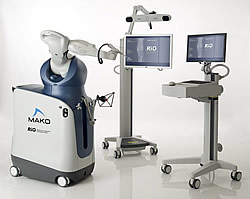
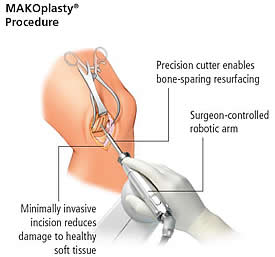
iAssist navigation system for knee replacement surgery
Traditional knee replacement systems rely upon visual estimation and anatomical landmarks to align the bone cuts. The iAssist device uses a novel accelerometer-based computer navigation system to assure the bone cuts (and thus the knee itself) are optimally aligned. The following video demonstrates the procedure (warning – includes some graphic scenes of a real knee surgery).
Abbreviated Surgery of the Zimmer® iASSIST® Knee featuring the 2-Pod and 4-Pod techniques
Arthroscopic “all inside” anterior cruciate ligament reconstruction
A torn anterior cruciate ligament can be a fairly disabling injury for active individuals, allowing the knee to slip out of place unpredictably. Reconstructing the ligament is a highly successful operation that allows the vast majority of athletes to return to their previous level of sports. In the past this was done using a large open incision on the front of the knee. Many arthroscopically-assisted techniques have been developed that allow small incisions. The “all inside” technique uses smaller incisions than ever before, and is demonstrated in this animation:
Anterior Approach Hip Replacement
Though the anterior approach for hip replacement is not new, it has become possible to do the procedure through a much smaller incision using specialized instruments and operating table. The advantages of this technique include less likelihood of dislocation, sparing of the important muscles on the back of the hip, and more accurate placement of the components.
Here is an animation that demonstrates hip replacement surgery performed through the anterior approach
Arthroscopic rotator cuff repair
In the past repairing a torn rotator cuff meant a large incision and substantial pain. Now the same operation can be done using the arthroscope, a tubular lens that is inserted through ¼ inch incisions. These animations demonstrate two of the many techniques that can be used to repair a torn rotator cuff arthroscopically.
SpeedBridge Rotator Cuff Repair animation
Endoscopic Carpal Tunnel Release
Instead of making a large incision at the bottom of the palm, carpal tunnel release surgery can (in most cases) be done safely through a smaller incision in the distal forearm. This results in less pain and tenderness after the surgery, and more rapid recovery of normal hand use. Visit SegWAY Orthopaedics, Inc. for more information on their endoscopic CTR system.
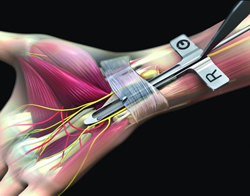

Reverse Geometry Shoulder Replacement
Large rotator cuff tears that are not repaired often lead to shoulder arthritis. The combination of shoulder arthritis and longstanding rotator cuff tear ("rotator cuff arthropathy") has had no good treatment options until recently. New, more durable versions of reverse geometry shoulder replacements work very well for this condition. They swap the usual locations of the "ball" and "socket", thereby allowing the arm to raise without a normally-functioning rotator cuff.
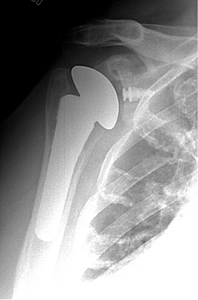
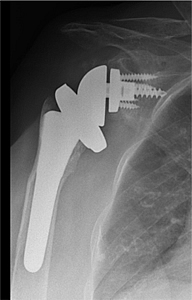
Ultrasonic Diagnosis and Injections
Ultrasound is an extremely useful tool in our office. It is painless, involves no radiation, and can provide a real-time view of many structures around the shoulder, wrist, knee, elbow, and hip. It also helps to make joint injections more accurate and less painful.
